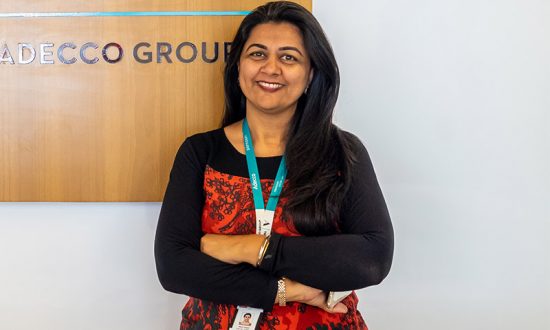Manu Saigal heads the Contract Staffing & Permanent Hiring Business and is responsible for driving growth and coordinating operations in the region. She comes with over 20 years of rich experience and her background includes P&L management, go-to-market strategy, and sales leadership – growing and managing large scale businesses. Her passions are creating and maintaining client relationships, as well as developing and executing growth strategies and team management. In the last 5 years, Manu has donned multiple roles within The Adecco Group, India; driving the Professional Staffing, Managed Services, Permanent Placement, Pharmaceutical, and Life-Sciences business lines.
Have ever really looked around in your workplace and observed how many of your teams are actually diverse and inclusive and I don’t mean just to tick diversity boxes. Do you cringe when you see hiring ads for all levels of hierarchy still demanding a certain profile. How would you feel if you were categorically told you are a diversity hire? While diversity sounds great in principle—the cultural shift towards a fair and equitable workplace in reality is still a far cry.
However, I see the light at the end of the tunnel. I am glad that we have at least moved on from having to establish the importance of diversity hiring to an actual shift in diversity hiring. We are no longer debating how diversity in organizations will bring in more productivity; or strengthen the top lines. It is a proven fact that more diverse organizations tend to have stronger bottom lines and are more creative than their homogeneous counterparts. Diversity is no more limited to gender, but it also encompasses diverse cultural backgrounds, global talent, different nationalities, differently abled people, different age groups and much more particularly in large global organizations like ours.
Prioritizing diversity hiring can help organizations stay competitive in today’s volatile talent market. Organizations have realized that diversity is not just a feel-good initiative, but mandatory for long term success. I was recently reading McKinsey’s Diversity Wins report, which elucidates that more diversity has led to better profitability. Organizations that embrace diversity in a true sense financially outperform 25% higher for companies in the top for leadership gender diversity and 36% higher for those with ethnic diversity.
With this established, I see a clear paradigm shift in diversity hiring while working with my clients:
Higher commitment from the leadership: Diversity is no longer an HR strategy. With the established benefits, it has now become imperative for the organization to pay due attention to diversity hiring and it all starts with the leadership team. Diversity is now a CEO-level priority and considered important throughout all levels of management. The involvement of the leadership team not only ensures that the diverse candidate joins the organization, but also stays – and hence providing the right environment and culture to support this. Organizations are also investing heavily to remove the unconscious biases within.
Hiring diverse talent: Most people managers are now driven by targets set to strike a balance. Most of the organizations are now chasing a target to bring in diverse candidates to join them. Having said that, there is a lot of backward integration in the entire hiring process right from the identify stage to the selection stage. This also has facilitated organizations to tie up specific skill development centers, NGOs, special institutes, and other avenues from where one could attract such talent. Diversity focused job fairs are another trend that has started and is here to stay. We have also observed more traction on diversity-focused job sites, demand to hire diverse candidates and organizations are now looking beyond the traditional sourcing methods that they were relying on so far.
Recruitment process: Most organizations are becoming more sensitive to the job descriptions which are published so that it does not “unintentionally” discourage any segment to apply. The descriptions are more gender-neutral and the even the hiring advertisement imagery used are more inclusive. We are also making a conscious effort to be more inclusive during the interview process. The interviews are no longer driven by a single person & instead there is a deliberate effort to have an inclusive panel – listening to different perspectives from different people only improves the fairness and quality of the hiring process.
There are various other measures that the organizations are now taking towards this direction. Organizations measure diversity and lack of bias in all recruitment marketing efforts, promotion, pay, and other talent practices. They are constantly measuring the current representation against industry standards and driving improvement against the baseline. This starts with recruitment & selection and extends beyond to retention and promotion. Interestingly, this is also of growing interest for the candidates. There are more and more candidates inquiring about the diversity and inclusion initiatives the organization has taken to ensure that they are aligned.
Despite the time and money invested by organizations around the world, there must be a reimagining of how to create effective interventions that demonstrate real benefits and are sustainable in the long run. The focus should be on developing specific and tangible programs that will benefit marginalized employees and enable retention of their diverse and underrepresented employees. Lastly, it is imperative to remember that everyone of us has a moral responsibility to support these efforts to safeguard the most impaired and marginalized employees, which will ultimately not just benefit everyone in the organization but the society at large.


